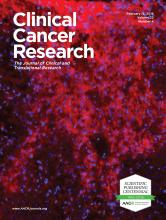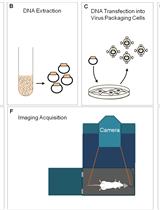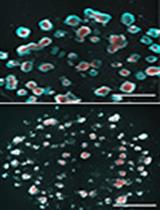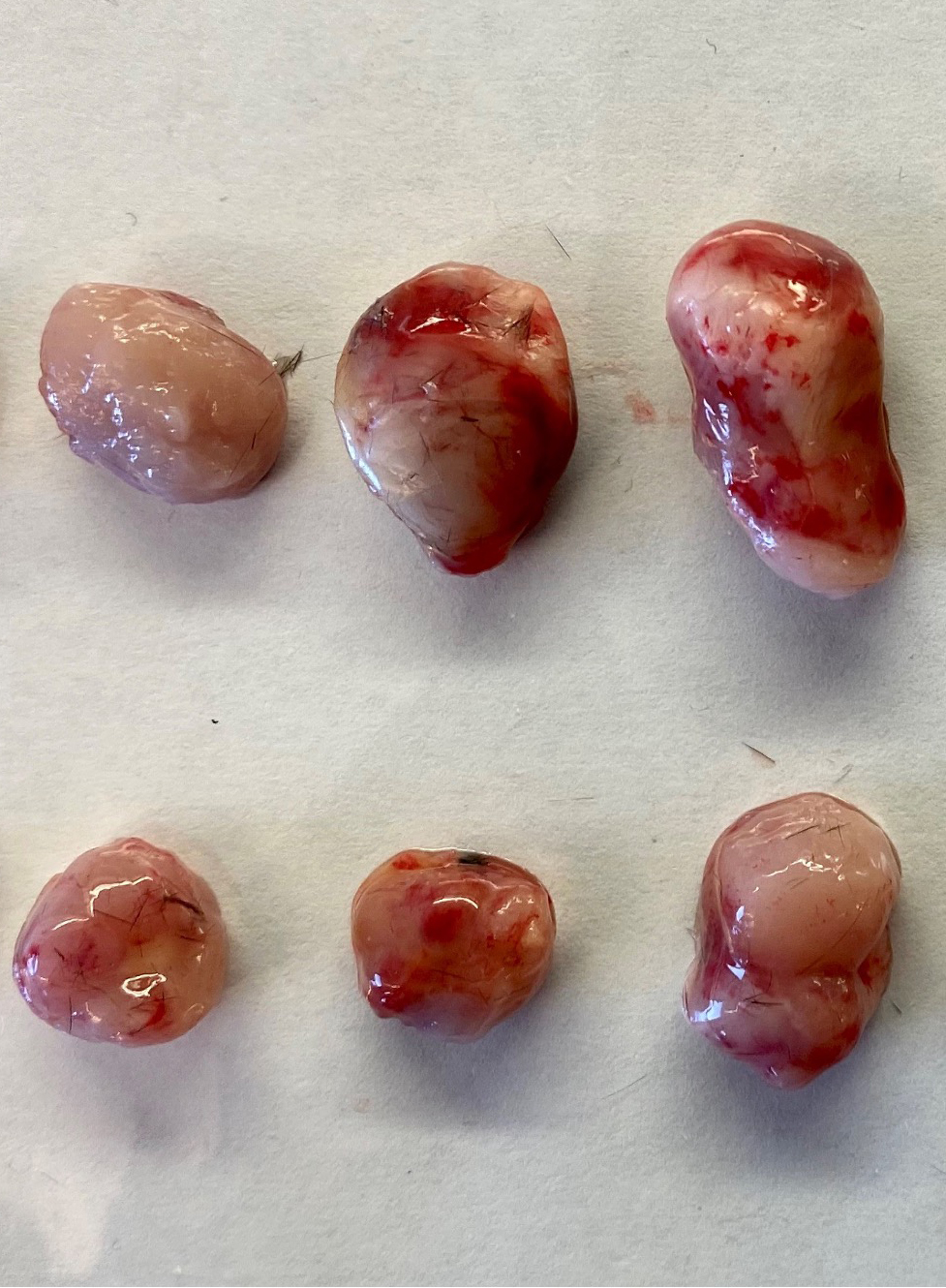- EN - English
- CN - 中文
In vivo Efficacy Studies in Cell Line and Patient-derived Xenograft Mouse Models
在细胞系和患者源性异种移植瘤小鼠模型中进行的体内疗效研究
发布: 2017年01月05日第7卷第1期 DOI: 10.21769/BioProtoc.2100 浏览次数: 16082
评审: Lee-Hwa TaiRuth A. FranklinAnonymous reviewer(s)
Abstract
In vivo xenograft models derived from human cancer cells have been a gold standard for evaluating the genetic drivers of cancer and are valuable preclinical models for evaluating the efficacy of cancer therapeutics. Recently, patient-derived tumorgrafts from multiple tumor types have been developed and shown to more accurately recapitulate the molecular and histological heterogeneity of cancer. Here we detail the procedures for developing patient-derived xenograft models from breast cancer tissue, cell-based xenograft models, serial tumor transplantation, tumor measurement, and drug treatment.
Keywords: Patient-derived xenograft (患者源性异种移植瘤)Background
Xenograft models have served as a robust method for investigating the genetic drivers of cancer and determining the potential efficacy of cancer therapeutics. The ability to propagate human cancer cells and tissues in mice was drastically advanced with the discovery of T-cell deficient athymic nude (nu/nu) mice and T- and B-cell deficient severe combined immunodeficient (scid/scid) mice (Flanagan, 1966; Bosma and Carroll, 1991). Since these discoveries additional immunocompromised mouse models have become available including, recombination-activating gene 2 (Rag2)-knockout mice, non-obese (NOD)-scid mice, and NOD-scid IL2Rgamma(null) mice (also known as NSG mice) (Shinkai et al., 1992; Prochazka et al., 1992; Shultz et al., 2005). These immunocompromised mouse models have enabled the development of numerous and diverse in vivo models of human cancer.
There are several options that should be considered when developing a xenograft model including the site of injection or implantation. Subcutaneous xenografts are often used in in vivo studies due to tumor accessibility for growth measurement and imaging; however a significant limitation of this model is the lack of a normal stromal microenvironment for most cancer cells. Orthotopic xenografts offer a complementary stromal microenvironment; however there are also disadvantages to this route depending on the orthotopic site, including more complex surgical procedures, difficulty of measuring tumor growth or response, and the limitations of rodent stroma (Talmadge et al., 2007). The use of orthotopic xenografts has been used extensively in many cancer studies, especially breast cancer research. Injecting into the mammary fat pad is a relatively simple procedure that allows for the visible and measurable growth of breast cancer cells. Even though the mammary fat pad offers a complementary tissue site for breast cancer cells, it is important to note there are distinct differences between the human and rodent mammary stroma and hormonal environment.
Xenograft models have been used extensively as predictive models of cancer therapeutic efficacy. For preclinical studies, it is essential to evaluate drug efficacy and potential toxicities in vivo. Even though in vivo preclinical studies are valuable, the results have not consistently translated to the clinic and the significance of these studies are debated (Talmadge et al., 2007; Sausville and Burger, 2006). There are several variables that need to be considered when designing drug studies such as the appropriate cell lines (or PDX models), dosage and dosing schedules, and statistical analysis. Each of these factors should be carefully considered in order to most closely mimic human cancer progression and treatment response.
Recently there have been significant advances in the development of patient-derived tumor xenografts (PDX). PDX models have the advantage of maintaining the molecular and histological heterogeneity of the original tumor (DeRose et al., 2011). Moreover, they have been shown to be superior at predicting drug response compared to standard cell culture xenograft models (Hait, 2010; Fruchter et al., 1990; Voskoglou-Nomikos et al., 2003; Gao et al., 2015). Recent studies have advanced the success of establishing breast cancer PDX models that recapitulate the molecular, stromal, and phenotypic heterogeneity that exists in breast cancer (DeRose et al., 2013). Overall, cell line-based and patient-derived xenografts are essential models for investigating cancer initiation, progression, and treatment response. Here, we describe the protocols for developing cell-based xenograft models, patient-derived xenograft models from breast cancer tissue, serial tumor transplantation, tumor measurement, and drug treatment.
Materials and Reagents
- 25 gauge needle (for inoculations) (BD, catalog number: 305127 )
- Tissue culture-treated culture dish (Corning, catalog number: 430293 )
- Eppendorf tubes (1.5 ml) (Eppendorf, catalog number: 022363204 )
- Falcon 15 ml conical centrifuge tubes (Corning, catalog number: 352196 )
- Cryogenic vial
- Trocar syringe, 10 gauge (Innovative Research of America, catalog number: MP-182 )
- 1 cc U-100 insulin syringe, 28 gauge x ½” needle (for Ketoprofen injections) (BD, catalog number: 329410 )
- Oral gavage tips, 22 gauge x 1” with 1 ¼ mm ball (Cadence, catalog number: 7901 )
- Tuberculin syringe, 1 ml (for inoculations) (BD, catalog number: 309659 )
- Betadine solution swab sticks (Thermo Fisher Scientific, Fisher Scientific, catalog number: 19-061617 )
- Sterile alcohol prep pads, 70% isopropyl alcohol (Thermo Fisher Scientific, Fisher Scientific, catalog number: 22-363-750 )
- Sterile cell preparations or patient-derived tumor tissue
- 4-7 week old Athymic Nude mice [Crl:NU(NCr)-Foxn1nu] (Charles River Laboratories International, catalog number: 490 )
- 4-7 week old NSG mice (NOD scid gamma, NOD-scid IL2Rgnull, NOD-scid IL2Rgammanull) (THE JACKSON LABORATORY, catalog number: 005557 )
- Trypsin or appropriate enzymes
- Hanks’ balanced salt solution modified (HBSS) (Thermo Fisher Scientific, GibcoTM, catalog number: 14170112 )
- Research Animal Diagnostic Laboratory (RADIL) infectious microbe PCR amplification test (IMPACT) (IDEXX BioResearch)
- Phosphate buffered saline (PBS) pH 7.4 (Thermo Fisher Scientific, GibcoTM, catalog number: 10010049 )
- Penicillin-streptomycin (5,000 U/ml) (Thermo Fisher Scientific, GibcoTM, catalog number: 15070063 )
- 70% ethanol
- Surgical cleaner
- Isoflurane liquid inhalant OD 99.9% (Henry Schein Medical, catalog number: 1182097 )
- Ketofen® (Ketoprofen) (Patterson Veterinary Supply, catalog number: 10004029 )
- Absorbent underpads (Thermo Fisher Scientific, Fisher Scientific, catalog number: S67011 )
- 10% neutral formalin (Sigma-Aldrich, catalog number: HT501128-4L )
- FBS
- DMSO
- Optional Materials and Reagents
- 17β-Estradiol, 60-day release pellets (Innovative Research of America, catalog number: SE-121 )
- Veterinary grade surgical glue (Patterson Veterinary Supply, catalog number: 07-805-5031 )
- Cryogenic media (see formulation below)
- Cell freezing container (Corning, catalog number: 432010 )
- Internal thread cryogenic vials, 2.0 ml (Corning, catalog number: 430488 )
- Liquid nitrogen
Equipment
- Digital calipers (Thermo Fisher Scientific, Fisher Scientific, catalog number: 06-664-16 or Mitutoyo America, catalog number: 500-163-30 )
- Safety scalpel (Merit Medical Systems, catalog number: SMS210 )
- Wound clip applier 9 mm (Roboz Surgical Instrument, catalog number: RS-9260 )
- 9 mm wound clips (Roboz Surgical Instrument, catalog number: RS-9262 )
- Wound clip remover 4’’ (Roboz Surgical Instrument, catalog number: RS-9263 )
- Ear punch; 2 mm; 2’’ length (Roboz Surgical Instrument, catalog number: 65-9900 )
- Micro dissecting scissors 4’’ straight sharp/sharp (Roboz Surgical Instrument, catalog number: RS-5912 )
- Moloney forceps; serrated; slight curve; 4.5’’ length (Roboz Surgical Instrument, catalog number: RS-8254 )
- Micro dissecting forceps; serrated, full curve, 4’’ length (Roboz Surgical Instrument, catalog number: RS-5137 )
- Isoflurane chamber and nose cone
- Fisher scientific slide warmer model 77 (Thermo Fisher Scientific, Fisher Scientific, catalog number: 12-594 )
- Oster Cord/Cordless trimmer (Patterson Veterinary Supply, catalog number: 07-880-1877 )
- Culture hood
Procedure
文章信息
版权信息
© 2017 The Authors; exclusive licensee Bio-protocol LLC.
如何引用
Tovar, E. A., Essenburg, C. J. and Graveel, C. (2017). In vivo Efficacy Studies in Cell Line and Patient-derived Xenograft Mouse Models. Bio-protocol 7(1): e2100. DOI: 10.21769/BioProtoc.2100.
分类
癌症生物学 > 肿瘤免疫学 > 肿瘤形成 > 细胞分离和检测
癌症生物学 > 侵袭和转移 > 癌症治疗
细胞生物学 > 细胞分离和培养 > 转化
您对这篇实验方法有问题吗?
在此处发布您的问题,我们将邀请本文作者来回答。同时,我们会将您的问题发布到Bio-protocol Exchange,以便寻求社区成员的帮助。
Share
Bluesky
X
Copy link













